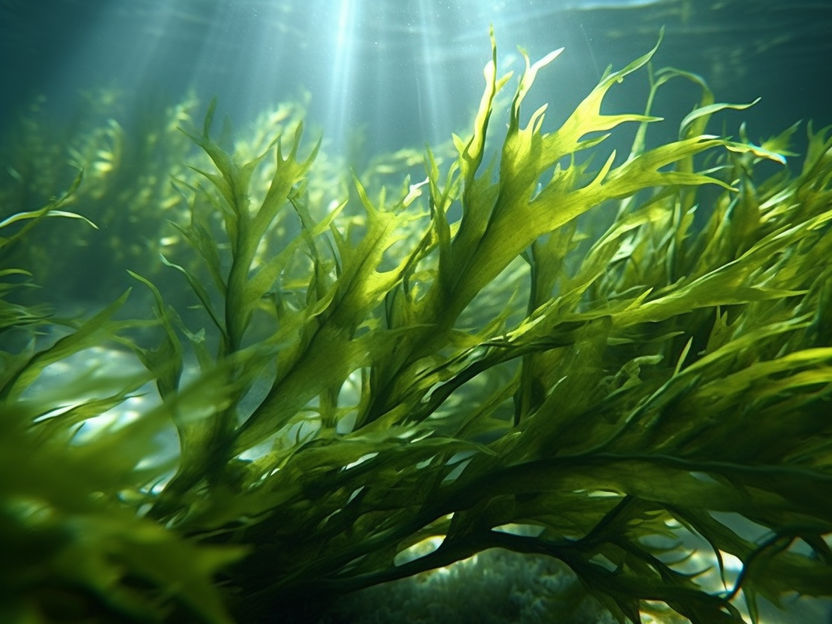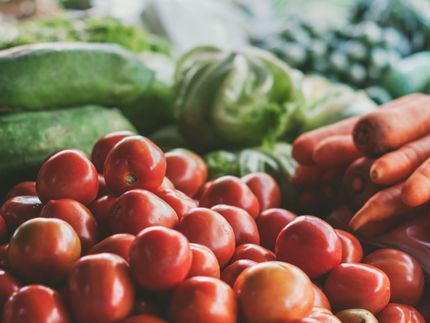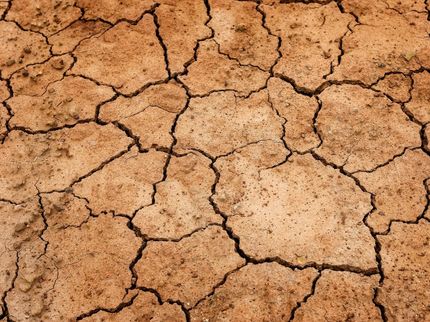Seaweed farming may help tackle global food insecurity
Researchers at the Friedman School see significant income-boosting potential in the sustainable superfood
To help solve hunger and malnutrition while also slowing climate change, some farmers could shift from land to sea, suggests a recent study from the Friedman School of nutrition Science and Policy at Tufts University. The study was published in Global food security.

symbolic picture
computer generated picture
Producing and selling seaweed could boost incomes for farmers in low- and middle-income countries (LMICs), particularly in coastal regions of Africa and Southeast Asia, said Patrick Webb, the Alexander McFarlane Professor of Nutrition at the Friedman School and senior author of the study. The other authors were Natalie Somers, N23, and Shakuntala Thilsted, who works for the Consultative Group on International Agriculture Research and won a 2021 World Food Prize for research and innovation in aquaculture and food systems. The team reviewed research papers, existing databases, United Nations and World Bank Group reports, and more.
A more sustainable alternative to raising livestock, seaweed cultivation requires no land, freshwater, or chemical fertilizers, and could become particularly profitable as demand for nutrient-rich seaweed products grows around the world, the study found. Those profits would mean more buying power for those households and communities who produce, process, package, and export the microalgae, which in turn would translate into healthier diets.
“One of the biggest problems of food insecurity in LMICs is the unaffordability of healthy diets,” said Webb, who also serves as director for the Food Systems for Nutrition Innovation Lab at Tufts. “There are roughly 3.5 billion people in the world who can’t afford a healthy diet even if they choose local foods at local prices. For many of those people, cultivating and selling seaweed would lead to higher incomes and improved nutrition through purchases on the market.”
Easy and environmentally friendly
A friendly crop for both farmers and the environment, seaweed has been grown in parts of Asia for centuries using fairly simple techniques, according to the study.
To start, farmers attach long lines of rope to the roots of the algae, which nourish the plant by absorbing nutrients from the water. Six to eight weeks later, they gather the seaweed by hand and dry it in the sun. “A lot of what we're looking at on the farming side is not about finding new crops or different kinds of crops. It’s about what’s already being grown that could be scaled up cost-effectively,” Webb said.
On top of being relatively easy to grow, seaweed has a miniscule carbon footprint, and may even help lower the ocean’s carbon levels. Though little is yet known about how much CO2 seaweed releases during harvest, research has found that perennial brown algae farms absorb up to ten tons of CO2 per hectare of sea surface per year. In addition to its “carbon sinking” powers, when added to livestock feed, seaweed could help dramatically reduce methane gas emissions.
“Unless we get significant warming of the oceans, cultivating seaweed offers a way that is not just climate friendly, but climate proof,” said Webb. “We don’t know how soon the industry will start to experience the negative effects of climate change, but the potential looks good. By farming seaweed, it’s not going to accelerate those negative effects. Whereas cutting down trees and adding more livestock certainly would.”
The challenges of production and processing
But while seaweed farming helps the environment, climate change itself may present barriers to growing more of it. Ocean water is becoming increasingly acidic, which is not ideal for growing healthy, edible seaweed, the authors said.
Additionally, seaweed’s primary value as an export would be for its extracts as ingredients, rather than as a sea vegetable to be eaten whole, according to the study. And while countries with higher average incomes that produce and export brown, green, and red seaweeds in large quantities already have the infrastructure needed to effectively process, test, and regulate what may eventually land on consumers’ plates, most LMICs do not.
Research into processing bottlenecks is limited, and what little data exists on factors such as consumer patterns is owned by the food companies who collect it, Webb said—which means governments and entrepreneurs in many LMICs have had few resources or incentives to invest in aquatic plant farming.
“The steps taken between the farm and the fork, that’s what we need to focus on,” Webb said. “We need to work more closely with governments and the private sector to figure out where the bottlenecks are and how to overcome them.”
A bounty for the taking
If those obstacles can be addressed, the opportunities of seaweed aquaculture are boundless, the authors said. The industry has flourished in Indonesia, where seasonal labor is steadily available and farms can achieve industrial-level economies of scale (in contrast to the family-run farms of, for example, India and Tanzania). Indonesia is now a key exporter of two seaweed species from which carrageenan, a thickener found in nut milks and meats, is extracted.
“There are many different types of seaweed, and they all require somewhat of a different environment in which to grow. The vast coasts of Africa and Asia, not all of it will be prime real estate,” Webb said. "But much of it will be.”
For seaweed farming to expand in these places, governments must take it seriously and create food safety regulations and an overall environment where it can happen, Webb said. Local and international investment interest will also be key. “If it doesn’t happen tomorrow, with the right conditions, it could happen the day after tomorrow,” Webb said.
It’s early days for seaweed production in LMICs, but Webb is confident about its promise for farmers. “The Ministry of Agriculture, or even the Ministry of Fisheries in these countries probably never discusses seaweed,” he said. “What if they did? They might discover a goldmine.”
The lead author received financial support from the United States Agency for International Development as part of the Feed the Future Food Systems for Nutrition Innovation Lab. The content is solely the responsibility of the authors and does not necessarily represent the official views of the United States Agency for International Development.
Original publication
Other news from the department science
Most read news
More news from our other portals
See the theme worlds for related content
Topic world Food safety
Food safety is at the heart of the food and beverage industry. It ensures that the food we eat every day is not only nutritious, but also free of harmful contaminants. From field to plate, the industry monitors and regulates every step of the process with strict quality controls, advanced testing methods and continuous research.

Topic world Food safety
Food safety is at the heart of the food and beverage industry. It ensures that the food we eat every day is not only nutritious, but also free of harmful contaminants. From field to plate, the industry monitors and regulates every step of the process with strict quality controls, advanced testing methods and continuous research.





























































